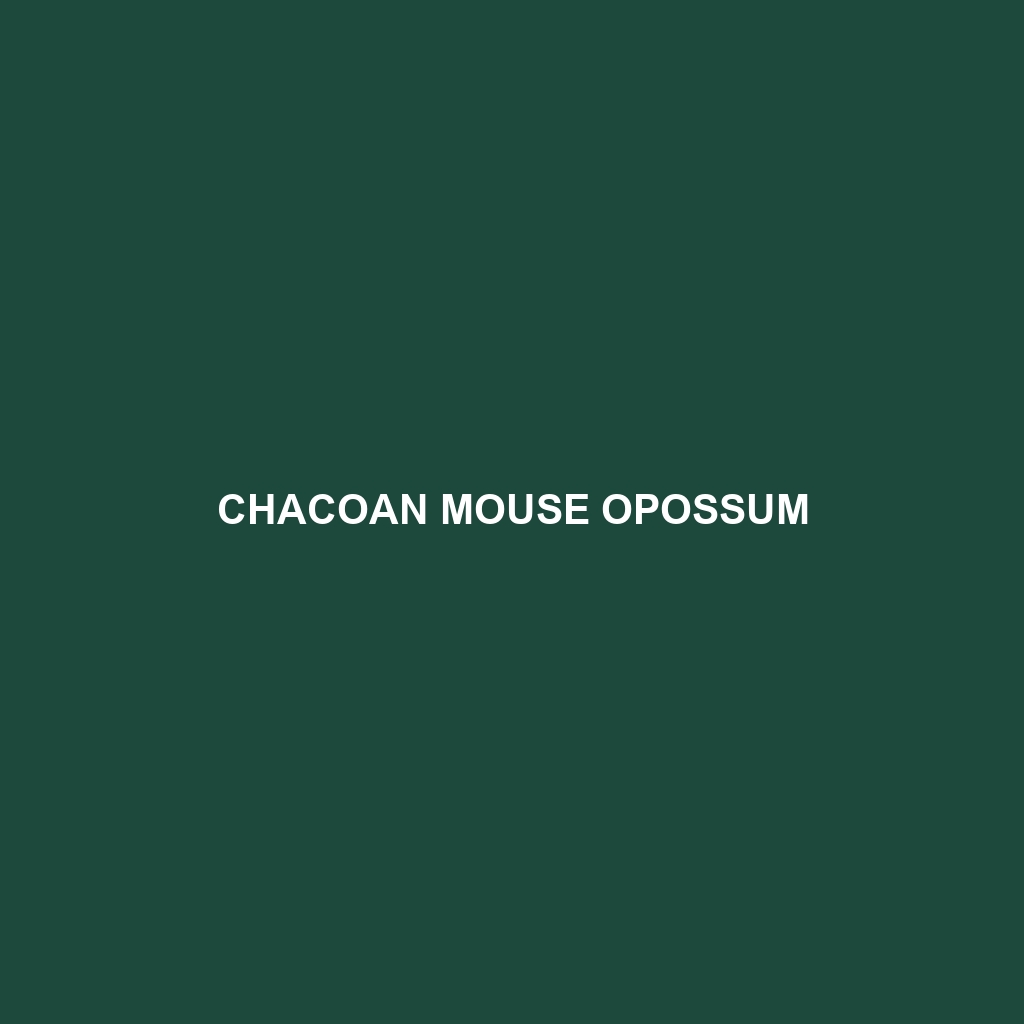Chacoan Mouse Opossum (Thylamys pusillus)
The Chacoan Mouse Opossum, also known as Thylamys pusillus, is a small marsupial species endemic to the Gran Chaco region of South America. This nocturnal, tree-dwelling creature is known for its nimble movements and adaptability to various environments within its range. Despite its small size, the Chacoan Mouse Opossum plays a significant role in its ecosystem, serving as both predator and prey.
Physical Characteristics
Size and Weight:
Head-Body Length: Approximately 9 to 13 centimeters (3.5 to 5 inches).
Tail Length: Roughly equal to or slightly longer than the head-body length.
Weight: Typically ranges from 20 to 50 grams (0.7 to 1.8 ounces).
Coloration:
Fur: Generally a grayish-brown to reddish-brown coat on the dorsal side, with a lighter, creamy white to pale gray underbelly.
Tail: The tail is prehensile, covered with sparse hair, and usually matches the body in coloration but may have a paler underside.
Special Features:
Ears: Large, rounded ears that are hairless and quite prominent.
Eyes: Large, dark eyes adapted for night vision.
Limbs: Equipped with sharp claws for climbing and gripping branches.
Behaviors
Social Interactions:
Primarily solitary, except during the mating season.
Mother opossums are known to carry their young on their back or within their marsupial pouch.
Feeding Habits:
Diet: Omnivorous; feeds on fruits, insects, small vertebrates, and occasionally nectar.
Utilizes its keen sense of smell and dexterous paws to forage for food.
Ecological Roles:
Predator: Helps control insect populations and occasionally preys on small vertebrates.
Prey: Serves as a food source for larger predators like birds of prey and snakes.
Habitats
Geographical Range:
Found primarily in the Gran Chaco region, which spans parts of Bolivia, Paraguay, Argentina, and Brazil.
Preferred Habitats:
Prefers dry forests, shrublands, and savannas.
Can adapt to secondary forests and disturbed habitats, showcasing its versatility.
Adaptations
Physical Adaptations:
Prehensile Tail: Assists in climbing and maintaining balance in arboreal habitats.
Nocturnal Vision: Large eyes enhance night vision, aiding in nocturnal activity.
Behavioral Adaptations:
Seasonal Breeding: Breeding season typically aligns with periods of resource abundance.
Torpor: May enter a state of torpor during extreme weather conditions to conserve energy.
Conservation Status
Current Status:
Classified as “Least Concern” by the IUCN Red List, but habitat destruction and fragmentation pose potential threats.
Conservation Efforts:
Efforts include habitat preservation and monitoring populations to ensure they remain stable.
Fun Facts
Marsupial Pouch: Like other marsupials, females have a pouch where they nurse and protect their young.
Adaptability: The Chacoan Mouse Opossum is highly adaptable, capable of surviving in both forested and open environments.
Nutrient Cycling: By consuming a variety of food sources, this opossum helps in nutrient cycling within its ecosystem.
The Chacoan Mouse Opossum is a fascinating, yet often overlooked, species that plays a crucial role in the health and balance of its environment. Whether you’re an enthusiast of small mammals or an advocate for biodiversity, the Chacoan Mouse Opossum is a remarkable creature worth learning about and protecting.
